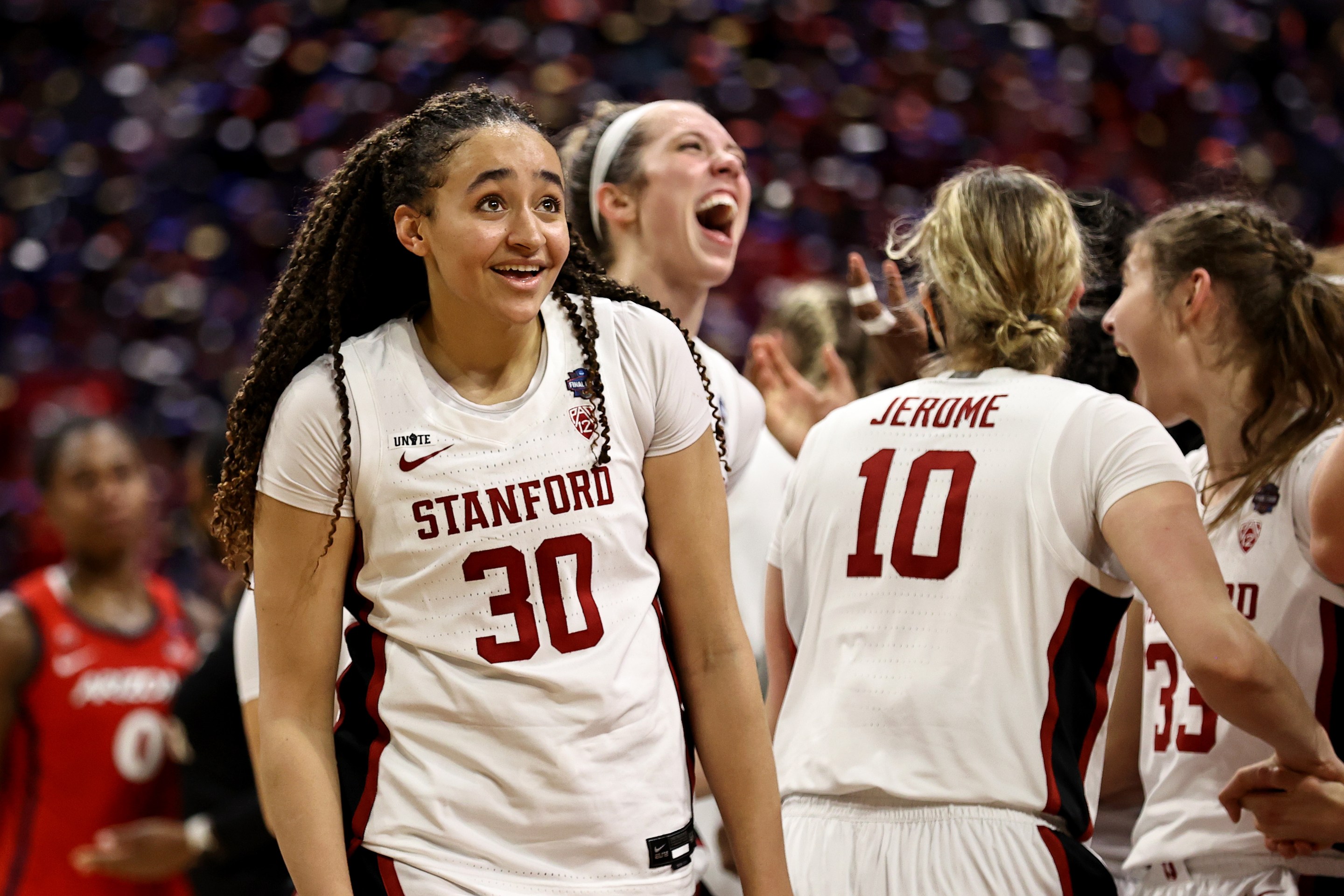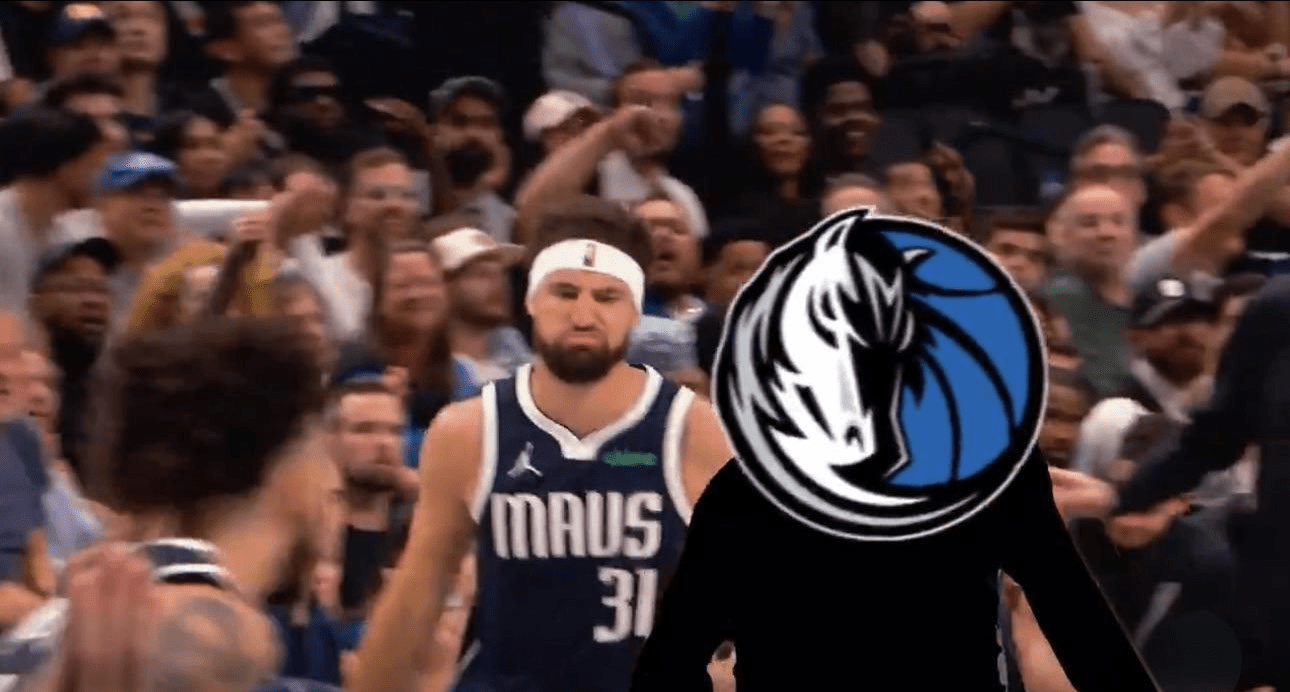Some coaches speak the language of battle; Tara VanDerveer, piano lover, always preferred music. The old Tara-ism goes that a good basketball team is like an orchestra. Everyone plays along in perfect rhythm and harmony, shifting in and out of the action as needed. Sometimes the moment calls for a solo. There's another less-used line of hers about the importance of "practicing scales," which is to say you can only pull off that kind of performance if you've done the dull homework first.
There it all was—scales and symphony—in Stanford's final defensive stop at the buzzer, which earned them an NCAA championship, the third in program history but first in nearly three decades, in a 54–53 win over Arizona. The night's gameplan, the fruit of that good scouting grunt work on Stanford's part, had been to pressure Arizona's heroic guard, Aari McDonald, and make her work for her shots, a task the Cardinal handled well, sometimes at the expense of everything else. McDonald shot 5-of-21 from the floor, thanks to the fact that she was swarmed by at least two of Stanford's giant defenders every time she stepped foot in the paint. In a version of this game where Stanford didn't turn the ball over 21 times, McDonald's struggles probably would have been enough to give the Cardinal a comfortable win.
Up just one point with six seconds left in the game after bungling their last possession, Stanford needed that suffocating defense agan. Time for the balance, the tempo, the show: Stanford's Lexie Hull defended Arizona's inbounds pass to McDonald perfectly. The excellent footwork of Anna Wilson, McDonald's co-Pac-12 Defensive Player of the Year, kept McDonald out on the perimeter until 6-foot Hull and 6-foot-4 Cameron Brink could come up over to help. There's no more representative image of this Stanford team, of its cathartic inevitability, than the one of 5-foot-6 McDonald looking flustered as the clock ticked down and the giants closed in.
McDonald heaved something up. "It was the longest second," VanDerveer said.
THIS ENDING! 😱 pic.twitter.com/eyLSuJAVAC
— SportsCenter (@SportsCenter) April 5, 2021
If it had gone in, that would be just Tara VanDerveer's luck, wouldn't it? All fans believe their teams to be victims of special curses, and though this is wild egotism or amnesia in most cases, maybe not so in Stanford's. Since last winning a championship—we're talking the George H.W. Bush administration—VanDerveer and the Cardinal have endured the pain of perennial contention without hardware. In the better years, that meant playing runner-up to UConn or Tennessee; in the worst one, a historic first-round humiliation. Not that VanDerveer is one to care too much about this sort of thing—you get the sense she'd be happy spending the rest of her life running three-man weave drills in the gym—but this year's championship feels like a weight finally offloaded. Add in that this Stanford team was hardened and exhausted by a local COVID restriction-necessitated 90-day road trip earlier this season, and you can practically see them trading in their spools of karma tickets at life's counter to redeem the big prize.
In those 29 years between titles, VanDerveer has coached her share of title-deserving virtuosos—Powell, Wiggins, Appel, Ogwumike. On Sunday night, Haley Jones won it for them all. Jones, a sophomore and the tournament's Most Outstanding Player, is something of a unicorn. She's listed as a guard but seems to bring up the ball about as often as she posts up. On a night the usually potent Stanford offense couldn't get much going and kept turning the ball over, Jones kept them alive with her 17 points, including what would be the game-winning and-one.
Arizona was quick, but Stanford was tall. Crucial to the win was the defense stepping up in the void. "We knew we needed to take care of the ball better. Down the stretch we just didn't," Jones said. "Luckily we got on the boards, made it a point to crash the O boards and box out as much as we could on the D boards." Wilson looked very much the best perimeter defender in the country. Locking down the inside was a great villain in the making, the freshman Brink, who by my eyes is at least two or three feet taller than her listed height. Her blocks sometimes seemed a touch cruel. (She finished the tournament with 24 of them.)
Arizona head coach Adia Barnes, a breakout star of March, couldn't help but smile a little after the game. "Stanford's such a good team with so much depth, so many weapons offensively. They isolated us inside. They did some things that were really tough for us to guard. But I'm not ashamed. We made it to the championship game. We came within a basket of winning a national championship, so I'm proud," she said. "My heart's broken, but I can't ask for anything more of this team."
Barnes played four years at Arizona and 12 years professionally. She knows better than most that sometimes you're at the mercy of the basketball gods. Last night, they rewarded patience over pluck. A team doesn't win two games in a row on close missed shots at the buzzer unless it's being driven by something inexorable, and this win for Stanford was just a long time coming.
Watching VanDerveer cut down her third net, I thought of someone who’d been there for the first and second. Val Whiting was an All-American center on the '90 and '92 championship teams. Two years ago, she mentioned to me that the only women's college games on TV when she was growing up were the Final Four games and the championships. This was the first year her Stanford Cardinal and all 63 other teams in San Antonio had every tournament game air on national television. I thought also about how this tournament began, and why it began that way: with national scrutiny of the NCAA's stewardship of women's basketball after Stanford sports performance coach Ali Kershner posted photos on Instagram of the men's and women's weight rooms. "Women athletes and coaches are done waiting, not just for upgrades of a weight room but for equity in every facet of life," VanDerveer said in a statement when those photos came out. It's been a long 29 years.





